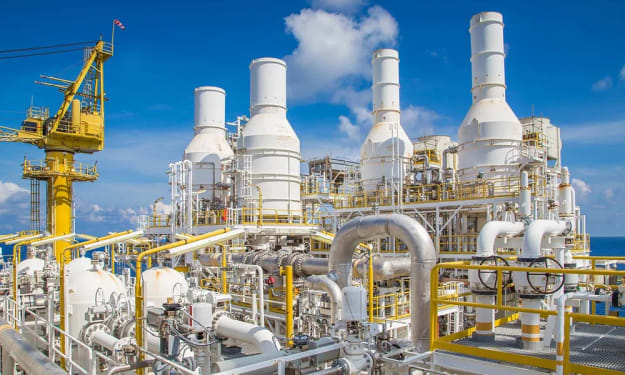What is Piping Design and how to use?
Piping Design

Piping design is a critical aspect of various industries, including oil and gas, petrochemical, power generation, and more. It involves the intricate planning, layout, and engineering of pipelines to transport fluids, gases, or even solids within a facility or across vast distances.
This article delves deep into the world of piping design, exploring its importance, key components, best practices, and the evolving technology that shapes this field.
The Significance of Piping Design
Piping design plays a pivotal role in industrial processes, contributing significantly to the efficiency, safety, and reliability of operations. Here are some key reasons why piping design is of utmost importance:
Optimal Flow and Efficiency: Properly designed pipelines ensure that materials flow smoothly, minimizing friction, pressure drops, and turbulence. This, in turn, enhances the overall efficiency of the system, reduces energy consumption, and increases throughput.
Safety: Safety is paramount in industries dealing with hazardous substances. A well-thought-out piping design helps prevent leaks, spills, and accidents by considering factors such as material compatibility, pressure limits, and the avoidance of stress points.
Cost Reduction: Effective piping design can significantly reduce construction and maintenance costs. By optimizing the layout, material selection, and support systems, unnecessary expenses are minimized.
Environmental Impact: Environmentally responsible piping design takes into account factors such as emissions, waste disposal, and containment, reducing the ecological footprint of industrial operations.
Key Components of Piping Design
Preliminary Planning: This initial phase involves defining project goals, material selection, and understanding the scope of work. Critical decisions are made regarding the type of fluid or gas to be transported, temperature and pressure conditions, and regulatory requirements.
Piping Layout: The layout phase focuses on determining the routing of pipelines within the facility. Factors such as accessibility, maintenance, and safety are considered during this stage. Computer-aided design (CAD) software is commonly used to create detailed layouts.
Materials Selection: Choosing the right materials is crucial for the longevity and efficiency of a piping system. Factors such as corrosion resistance, temperature tolerance, and cost play a significant role in material selection.
Stress Analysis: Stress analysis ensures that the piping system can withstand the mechanical stresses and loads it will encounter during operation. This involves calculating forces, moments, and thermal expansion effects.
Support and Hanger Design: Proper support and hanger design are essential to prevent sagging or excessive stress on the pipes. Engineers must consider factors like thermal expansion, seismic activity, and load distribution.
Valve and Instrumentation Selection: The selection of valves and instrumentation depends on the specific requirements of the system. Factors such as flow control, pressure regulation, and safety are taken into account.
Safety and Regulatory Compliance: Compliance with industry standards and regulations is non-negotiable in piping design. Safety features, emergency shutdown systems, and the prevention of leaks and spills are paramount.
Best Practices in Piping Design
To ensure a successful piping design project, it is essential to follow best practices:
Interdisciplinary Collaboration: Piping design is a multidisciplinary field that requires collaboration between engineers, architects, safety experts, and other professionals to create a comprehensive solution.
Regular Maintenance Planning: Design should consider ease of access for maintenance and repairs. Well-maintained systems have a longer lifespan and reduced downtime.
Flexibility: Building flexibility into the design allows for future modifications and expansions. This is particularly important in industries with rapidly changing requirements.
Thorough Documentation: Proper documentation of design calculations, material specifications, and installation procedures is crucial for future reference and maintenance.
Quality Control: Implementing rigorous quality control measures during construction and installation ensures that the final system meets design specifications.
The Evolving Technology in Piping Design
Piping design has benefited immensely from technological advancements. Here are some key technological trends shaping the field:
3D Modeling and BIM: Three-dimensional modeling and Building Information Modeling (BIM) tools have revolutionized piping design by providing a more accurate and visual representation of the system. This aids in better decision-making and clash detection during the design phase.
Computational Fluid Dynamics (CFD): CFD simulations allow engineers to analyze fluid flow patterns, temperature distributions, and pressure gradients within the piping system. This technology helps optimize designs for efficiency and safety.
IoT and Sensors: The Internet of Things (IoT) has introduced smart sensors that monitor the health and performance of pipelines in real-time. This data can be used for predictive maintenance and early detection of issues.
Virtual Reality (VR) and Augmented Reality (AR): VR and AR technologies enable engineers to visualize the entire piping system in a virtual environment. This aids in design review, training, and maintenance tasks.
Conclusion
Piping design is a complex yet indispensable discipline that underpins the functionality and safety of numerous industries. Its significance cannot be overstated, as it directly impacts efficiency, safety, and cost-effectiveness. By following best practices and embracing evolving technologies, piping design continues to evolve and meet the ever-growing demands of modern industries. As we move into an era of increased automation and digitization, the role of piping design remains integral to the success of industrial operations.
About the Creator
Arun kumar
We are providing multiple guest post on high qualtity websites.






Comments
There are no comments for this story
Be the first to respond and start the conversation.